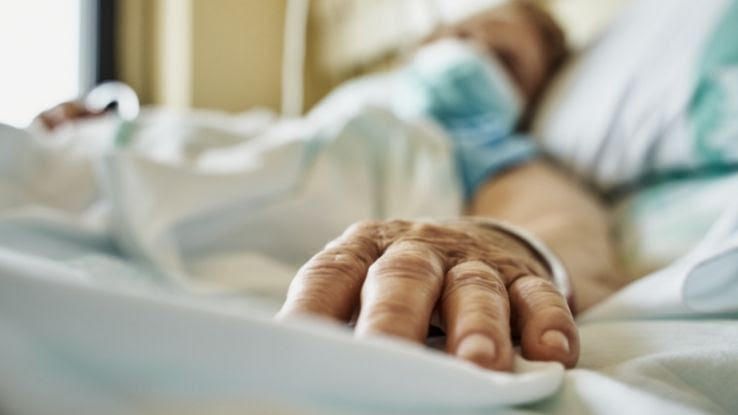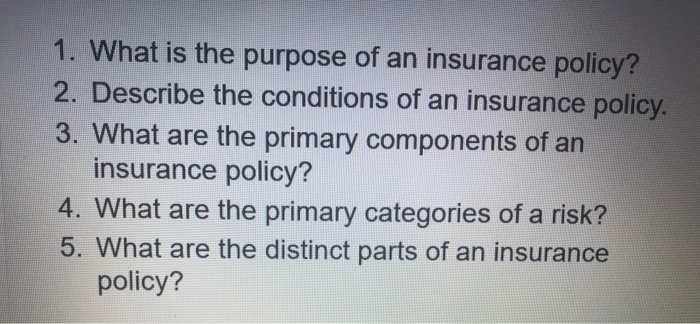The 10-Minute Rule for Pacific Prime
The 10-Minute Rule for Pacific Prime
Blog Article
All About Pacific Prime
Table of ContentsPacific Prime - The FactsOur Pacific Prime DiariesPacific Prime - An OverviewThe Best Guide To Pacific Prime
In a lot of states, the insurance provider is needed to send you a duplicate of the adjustments to your plan. It is essential that you review Recommendations or Riders so you understand how your plan has changed and if the plan is still sufficient to fulfill your requirements. To acquire a duplicate of your insurance coverage, please call your insurance agent or business.
The Institute of Medicine (IOM) Committee on the Consequences of Uninsurance launches an extensive examination of proof that addresses the value of wellness insurance policy coverage with the publication of this report. Insurance coverage Issues is the first in a collection of six records that will be provided over the next 2 years recording the fact and repercussions of having an estimated 40 million people in the USA without medical insurance protection.

Pacific Prime - Truths
The objective of this series of studies is to refocus policy focus on a longstanding issue. Complying with the lengthiest financial expansion in American history, in 1999, an approximated one out of every 6 Americans32 million adults under the age of 65 and more than 10 million childrenremains uninsured (Mills, 2000).

10 percent of the populace accounts for 70 percent of wellness care expenditures, a connection that has actually remained continuous over the past 3 decades (Berk and Monheit, 2001) - maternity insurance for expats. Therefore medical insurance remains to offer the feature of spreading out threat even as it significantly finances routine care. From the viewpoint of healthcare companies, insurance policy carried by their people helps secure a profits stream, and areas profit from monetarily practical and steady wellness treatment experts and institutions
Government provides medical insurance to populaces whom the personal market may not offer properly, such as impaired and seniors, and populaces whose accessibility to healthcare is socially valued, such as children and expecting ladies. The ultimate ends of medical insurance coverage for the individual and neighborhoods, consisting of work environment neighborhoods of staff members and companies, are enhanced health outcomes and quality of life.
The Pacific Prime Ideas
Workers place medical insurance first without a doubt in importance amongst all the benefits provided in the office (Salisbury, 2001). There have been substantial use this link financial investments of personal and public funds to offer health insurance policy, many individuals still have no protection. Despite substantial reporting of survey searchings for and health and wellness care research results, the public stays overwhelmed and mistaken about Americans without medical insurance and the implications of doing not have insurance coverage.

Without doubt, the complexity of American health and wellness treatment funding systems and the wide range of resources of information include in the general public's confusion and skepticism regarding medical insurance stats and their analysis. This record and those that will certainly follow goal to boil down and offer in conveniently understandable terms the considerable research that births on questions of medical insurance protection and its value.
Fifty-seven percent of Americans questioned in 1999 believed that those without wellness insurance policy are "able to obtain the care they require from physicians and health centers" (Blendon et al., 1999, p. 207). In 1993, when nationwide interest was concentrated on the issues of the uninsured and on pending wellness care legislation, just 43 percent of those polled held this belief (Blendon et al., 1999).

They additionally get fewer precautionary services and are less most likely to have normal look after chronic problems such as high blood pressure and diabetes mellitus. Chronic diseases can result in pricey and disabling problems if they are not well handled (Lurie et al., 1984; Lurie et al., 1986; Ayanian et al., 2000). One national survey asked even more than 3,400 grownups about 15 extremely significant or dark conditions.
Excitement About Pacific Prime
Added proof exists later in this chapter in the conversation of insurance and accessibility to wellness care. https://triberr.com/pacificpr1me. People without health insurance policy are young and healthy and choose to do without protection. Almost fifty percent (43 percent) of those surveyed in 2000 thought that individuals without medical insurance are more probable to have health and wellness troubles than people with insurance policy
Citizens and plan manufacturers in focus team conversations characterize those without insurance policy as young people who have the opportunity to be covered and feel they do not require it (Porter Novelli, 2001). Compared to those with at the very least some exclusive coverage, the without insurance are much less most likely to report being in superb or excellent wellness (Company for Medical Care Research and High Quality, 2001).
RESOURCE: Facility for Cost and Financing Researches, Agency for Healthcare Research Study and Quality, based upon MEPS data. Young adults between 19 and 34 are much more likely to lack medical insurance than any other age. This is mainly since they are much less frequently eligible for employment-based insurance coverage due to the nature of their task or their brief period in it.
The understanding that people without insurance coverage have better-than-average health adheres to from perplexing the fairly young age profile of the uninsured with the far better wellness, generally, of more youthful persons. This obscures the web link in between health condition and health and wellness insurance policy. For those without accessibility to workplace health insurance, poor health is a potential barrier to acquiring nongroup coverage because such coverage may be highly priced, leave out preexisting problems, or be simply unavailable.
Report this page